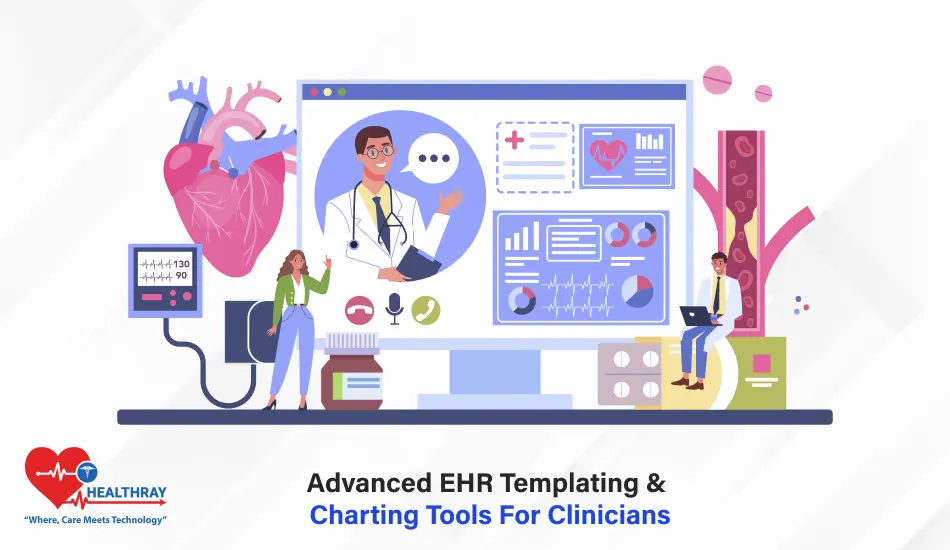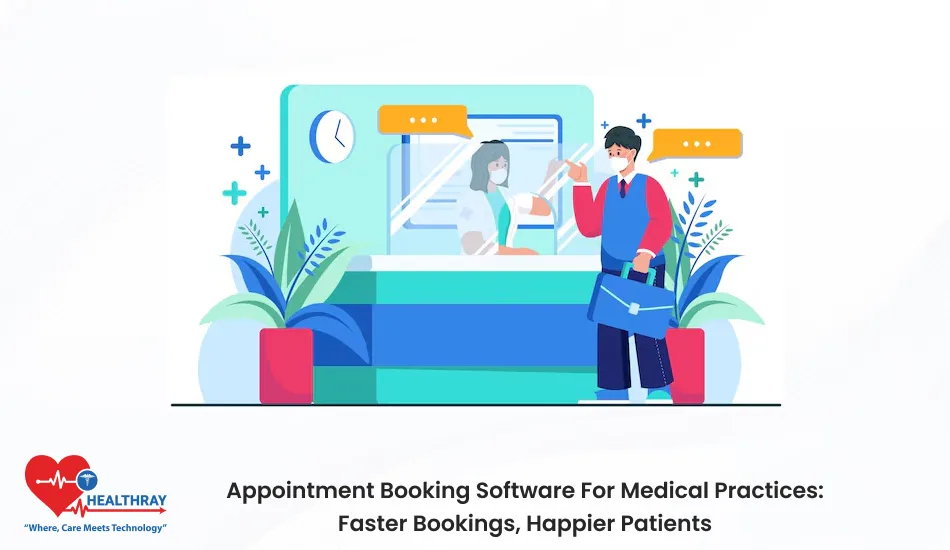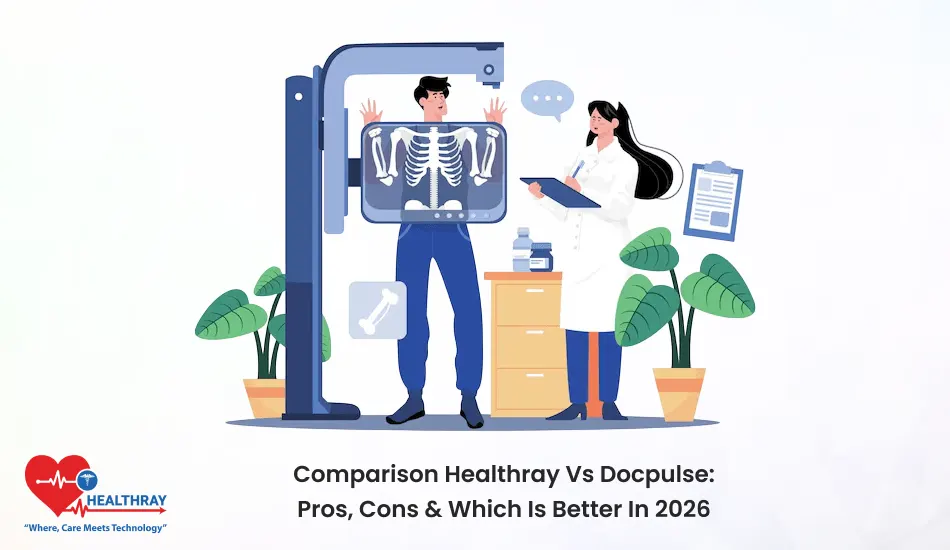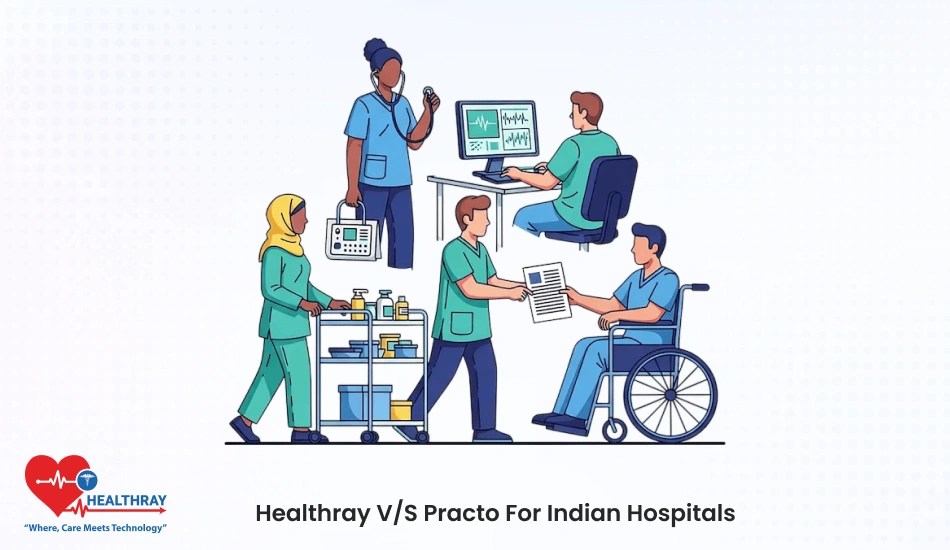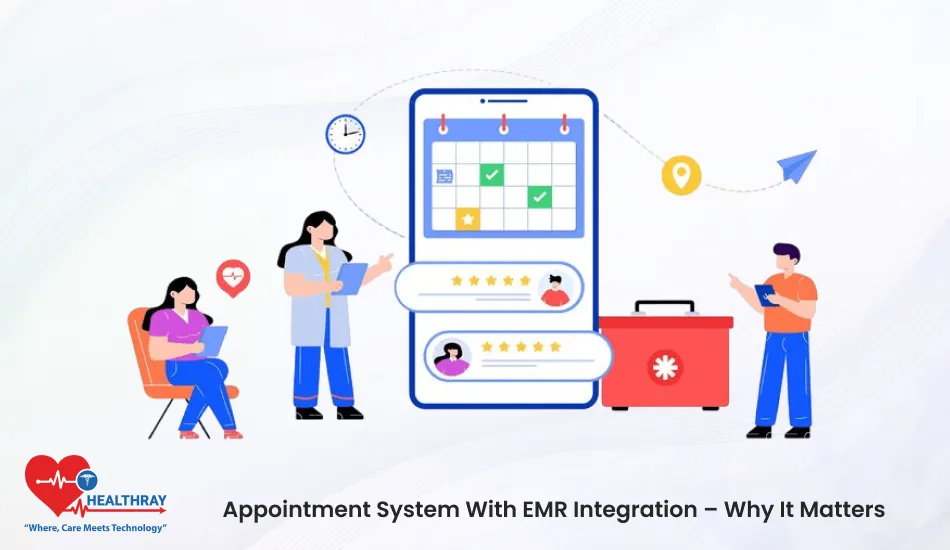Summary
Learn how EHR Templating & Charting Tools are revolutionizing the healthcare industry. This blog explains how smart EHR software makes documentation easier, promotes collaboration, increases accuracy and gives doctors more time with their patients.
Discover how EHR software companies are integrating artificial intelligence into their products to transform workflows, improve data sharing, and enable more intelligent clinical decision-making. Whether you operate a tiny clinic or a large hospital, this post explains that the future of efficient EHR in healthcare begins with choosing the right digital tools.
Introduction
Let’s be honest no clinician likes sinking into tons of paperwork! Yet, patient charts continue to pile up. That’s where advanced EHR Templating and Charting Tools in EHR software come in to save the day.
These tools completely alter the way you document, review and provide patient care as well as save your time. With their smart templates, voice notes, and auto-filled data, you spend fewer hours clicking and more time connecting. These tools also learn your habits, and they make every note faster and neater.
And for real? You don’t need to be a tech whiz to operate them. They are fun, straightforward and fit into your daily rhythm. In this blog post, we will see how these tools make clinical work more efficient, intelligent and extremely satisfying.
What are EHR Templating & Charting Tools?

Think of them as your smart digital assistants embedded in your EHR software. They help you document, sort and analyze patient information more quickly and neatly than you could do before.
Let’s take a simple example!
For instance, imagine you’re a teacher getting ready to prepare report cards. You could write every student’s details from the beginning; however, you could also work with a template, into which names, grades and remarks fit perfectly. Which one saves time? Definitely the second!
This is precisely how templating tools work in your EHR software. Specifically, you use smart templates and ready-made formats, instead of typing long patient notes over and over. They prompt your input; they can save you time and help you keep accurate records.
Now, on to the charting tools essentially, they are like replacing an infinite number of notebooks. Notably, they allow you to track everything symptoms, vitals, lab results, treatments all at once. Furthermore, you can update data within seconds, and instantly view patient history and even trends in their progress.
In other words, EHR Templating & Charting Tools provide structure, efficiency and eliminate ambiguity in your daily work.
What Makes EHR Templating & Charting Tools So Important Today?
EHR Templating & Charting Tools are everywhere now. They simplify recordkeeping, improve the quality of care and allow health care providers to spend more time with their patients and less with paperwork.
Growing demand for rapid and accurate patient records: Speed and accuracy are paramount in today’s healthcare. EHR Templating & Charting Tools prevent clinicians from forgetting to enter critical information, and help ensure that all records for all patients are completely and accurately rendered.
Function of templates in decreasing manual entry: Templates save a great deal of time on typing. Instead of writing the same stats over and over, clinicians use ready-made fields, which are time- and effort-savers and help avoid mistakes.
How charting tools provide uniform documentation: Charting tools keep every record uniform and organized. They design organizational charts that minimize mistakes, and allow for a quick overview or transmission of the information.
Demand for seamless data sharing across teams in health care: With these tools, doctors, nurses, and specialists can access the same data in real time. This fosters collaboration and avoids communication silos through EHR & telemedicine integration.
Increasing need for data analytics in clinical decision making: EHR software analyses and draws attention to information contained in the data warehouse in order to identify patterns, monitor progress, and improve treatment decisions.
Top Features of Modern EHR Templating & Charting Tools
Here are the top features of EHR Templating & Charting Tools that you can count on:
Templates to suit every speciality: Each medical speciality has its own style and need for documentation. Contemporary EHR Templating & Charting Tools empower clinicians to design templates that are suited for their own workflows.
In pediatrics, cardiology and orthopedics, these flexible templates speed documentation and make it more relevant. They guarantee that the proper information is recorded consistently, without excess typing or ambiguity.
Auto-populate previous data: One of the biggest time savers in today’s systems is the ability to auto-fill data. The EHR software can pull information from previous records like allergies, medications, and medical histories. This reduces time and human error and ensures that all patient information remains and is consistently updated across all visits.
Voice to text and smart suggestions: Documentation doesn’t have to mean endless typing. Clinicians can just talk into it to take notes because it has built-in voice-to-text.
Smart suggestions then anticipate what you might want to add next such as diagnosis codes or treatment plans speeding things up, making the process go more smoothly and effortlessly. Advanced AI in EHR software companies also enhances these features, helping predict patterns and optimize charting accuracy.
Organized data capture for analysis: Organized data is gold in healthcare. The fields are structured so that all information is easily analyzable at a later point. These insights can be applied by hospitals and clinics to establish trends, identify efficiencies and even predict patient needs. It’s how raw data turns into action for better care.
Integration with other systems: The best EHR systems don’t work alone; they connect with labs, imaging centres, billing software and even telemedicine platforms. Strong EHR & telemedicine integration maintains the continuity of all the components that comprise the healthcare process.
When lab results, prescriptions and treatment notes are all in one system, clinicians can better understand the complete history of the patient’s experience. Enhanced EHR & telemedicine integration also supports remote consultations, ensuring better continuity of care and improved patient outcomes.
Real-World Benefits of EHR Templating & Charting Tools for Clinicians
Here are some of the key benefits of EHR Templating & Charting Tools for clinicians:
Time Saving in the Documentation Process
One of the greatest advantages of EHR Templating & Charting Tools is the incredible amount of time saved. Rather than handwriting all of the details of patients’ records, practitioners work with preformatted templates and fields. This eliminates the need for them to input the same data multiple times and allows them to complete documentation in minutes instead of hours.
Documentation doesn’t end with care of patients; it touches billing and insurance claims as well. Properly-designed EHR in healthcare templates enhance both the speed and the accuracy of coding and billing. Proper recording of patient data lessens claim denials and makes it easier to be reimbursed.
More Accuracy, Fewer Errors
Accuracy is literally everything when it comes to patient data. The EHR Templating & Charting Tools minimize the chances of omitting details or making a mistake by displaying validated fields, check boxes, and prompts.
The EHR in healthcare system intervenes, for instance, if a clinician forgets to write a medication dosage before saving. This precision protects both the healthcare providers and the patients from issues of compliance.
Better Coordination Among Healthcare Workers
In a busy hospital or clinic, multiple professionals often work on the same patient’s case. Off the digital, the EHR in healthcare data easily becomes lost in translation.
But with EHR Templating & Charting Tools, all of the doctors, nurses, lab technicians, and specialists can instantly view the same up-to-date record. With these EHR & telemedicine integrations, even remote consultations are up to date. This way, wherever the clinician or patient is, everyone is working from the same page.
Step towards digital era with our healthcare solution
Revamp your hospital facilities and embrace change for better healthcare management. Ease in managing and organizing large medical datasets leads to effective analysis. Seize the opportunity now!
Improved Clinical Decisions
These devices do not just document data; they generate insight from it. EHR software helps clinicians easily review trends, such as increasing blood pressure or recurring symptoms over time.
They can make quicker, better-informed decisions using real-time data analytics. Some of the more sophisticated systems will actually incorporate AI in EHR software companies to predict possible risks or suggest treatment options based on past cases. This makes decision making smarter, faster and with real data, not guesswork.
Uniform and Standardized Documentation
One of the main benefits of EHR Templating & Charting Tools is uniformity across departments. All clinicians enter data in a standardized format.
This uniformity facilitates reading, reviewing and transferring of patient data without ambiguity. With EHR software, there is consistency in the data collected, whether it is for a small clinic or a large hospital, which increases clarity and compliance.
Reduced Burnout
With so many demands on clinicians, burnout is a serious concern. But EHR Templating & Charting Tools reduces the daily grunt work, automates repetitive processes, and removes the hassle of lost or difficult-to-find information.
Templates, charting, and EHR & telemedicine integration fit seamlessly to keep workflows continuous from in-office visit to virtual consultation. This continuity of care maintains efficiency in processes as well as morale among the staff.
Choosing the Right EHR Templating & Charting Tools for Your Practice
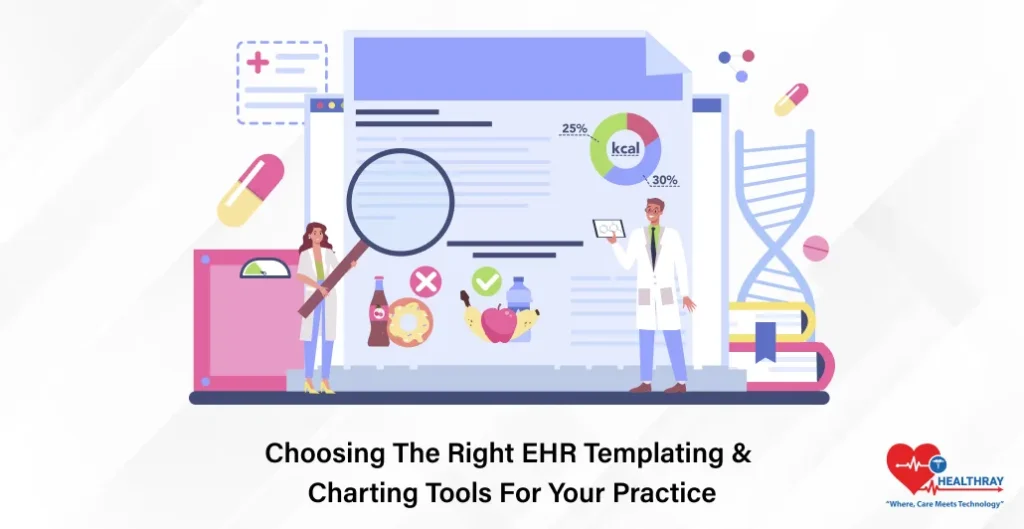
Fortunately, choosing the right EHR Templating & Charting Tools is not a huge task if you know a few things. The aim is to choose a system that suits your workflow, is tailored to your speciality and can enhance your productivity. Moreover, in today’s digital age, making the right choice not only impacts your productivity but also your patient outcomes.
One aspect to take into account is usability. Specifically, the best EHR software should be intuitive and should lend itself to human use. It should not take you weeks of training to be able to understand this. A clean interface is time-saving and reduces frustration. As a result, it enables clinicians to toggle between templates, charts, and records quickly, making documentation less of a burden and more of a help.
Additionally, customization is another must. Every healthcare practice and its needs are unique. Whether you deal in pediatrics, cardiology or general medicine, your tools ought to adapt to you. Custom templates enable you to capture what is important in your field, accurately and relevantly.
So is integration. The right tools should integrate easily with labs, billing systems and imaging systems. Moreover, in a robust electronic health record (EHR) system, data is fluid and does not duplicate or confuse between disconnected departments within the healthcare community. Better yet, it is integrated with telemedicine tools so that patient care is seamless between in-person and online visits.
Now, let’s talk about intelligence. AI in EHR software companies are often designed to do much more than take notes. For instance, they assist in reading data, predicting trends, suggesting diagnosis codes or treatment plans. Consequently, this smart support helps them make decisions faster and with fewer mistakes. One more benefit of AI in EHR software companies is that it can personalize your workflows based on how you document. Thus, the more you use it, the more it gets to know your style, making each session smoother.
Finally, think long term. The best EHR software are the ones that grow with you. Therefore, your system should be able to grow as your clinic grows, without the need for an entire system overhaul. Additionally, it should offer consistent updates, data security, and support.
Conclusion
Digital systems are no longer optional; indeed, they are a necessity. The EHR Templating & Charting Tools support clinicians’ daily work, ensure accuracy, and shift the focus back to patient care. Consequently, healthcare teams can work faster, smarter and safer when utilizing advanced EHR software that is powered with intelligence.
Moreover, the right tools integrate each element of the system so that EHR offers great healthcare, communication, and ultimately, better patient outcomes. In the end, it is about choosing and using these tools wisely; thus, creating a better, more connected, more effective healthcare system for everyone.
